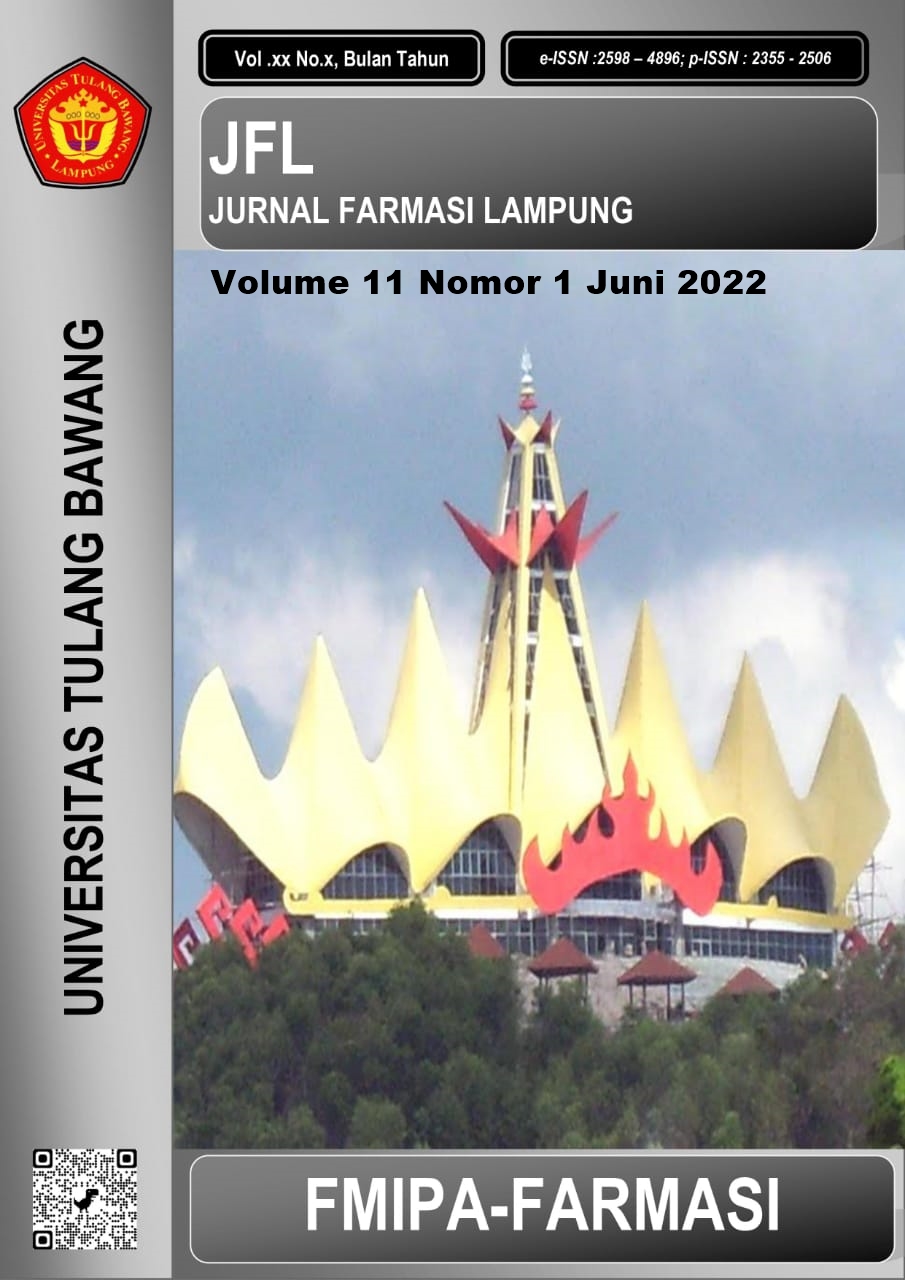IDENTIFIKASI DRUG RELATED PROBLEMS (DRPs) PENGGUNAAN ANTIHIPERTENSI PASIEN HIPERTENSI DI RSU AZZAHRA KALIREJO LAMPUNG TENGAH
DOI:
https://doi.org/10.37090/jfl.v11i1.715Abstract
A person is diagnosed with hypertension if there is an increase in systolic blood 140 mmHg and diastolic blood pressure 90 mmHg. Treatment of hypertension aims to reduce morbidity and mortality. Hypertensive patients receiving polypharmacy pharmacological therapy are at risk of developing DRPs. The purpose of this study was to identify the incidence of Drug Related Problems (DRPs) in the use of antihypertensives in hypertensive patients at Azzahra Kalirejo General Hospital, Central Lampung in 2021. This study was non-experimental with a retrospective descriptive design, then identified using the classification of DRPs according to Robert J. Cipolle EL. Pharmaceutical Care Practice and Medscape and Drug Interaction Chacker applications to identify drug interactions, and use the Medication Possession Ratio (MPR) formula to identify patient non-compliance. Based on the results of research at Azzahra Kalirejo General Hospital, Central Lampung, of the 135 samples that met the inclusion criteria, 80% of the samples experienced DRPs. Based on gender characteristics, there were 50.37% male and 49.62% female with 0% of patients aged <25 years, age 26-45 years 30.3%, age 46-65 years 57.8% and age > 65 years 11.8%. The most widely prescribed antihypertensive drug was furosemide as much as 42.2%, the most antihypertensive combination was a combination of two drugs as much as 57%. The most use of non antihypertensive drugs is PPI and analgesics as much as 12.8%. Cases of DRPs requiring additional therapy were 1.9%, drug therapy was not necessary 7.4% cases, inappropriate drugs 4.6% cases, doses too low and high in 0% cases, drug interactions were 77.8% with major severity 11.7%, minor 34.5% cases and moderate as many as 53.7%, patient non-compliance with DRPs occurred in 51.9% cases. Keywords: Antihipertensive, DRPs, Furosemide, HypertensionDownloads
References
Djojoningrat D. 2010. Buku Ajar Ilmu Penyakit Dalam. Edisi ke-5. Jakarta: Balai Penerbit FK UI.
Kurniati, N. 2015. Hubungan Pola Makan dengan Kejadian Sindrom Dispepsia Pada Mahasiswa Fakultas Kesehatan Masyarakat Universitas Sumatera Utara Tahun 2015. Medan : Universitas Sumatra Utar. Vol 5, No 1.
Irianto. 2015. Memahami Berbagai Macam Penyakit. Bandung : Alfabeta
Kementerian Kesehatan Republik Indonesia. 2019. Profil Kesehatan Provinsi Indonesia 2019. Jakarta : Kementerian Kesehatan Republik Indonesia
Dinas Kesehatan Provinsi Lampung. 2019. Profil Kesehatan Provinsi Lampung. Lampung : Badan Pusat Statistik Provinsi lampung.
Restu Gusti Mulandani. 2020. Pola Penggunaan Obat Pada Pasien Dispepsia Rawat Jalan di Rsud H. Abdul Manap Kota Jambi. J Ilm Farm. Vol 9, No 2.
Sumarni, Dina. 2019. Hubungan Pola Makan dengan Kejadian Dispepsia. Aceh : Sekolah Tinggi Ilmu Kesehatan Nurul Hasanah Kutacane. Vol 2, No.1.
Wiwi Ramolat. 2021. Faktor Resiko Kejadian Dispepsia di Wilayah KErja Puskesmas Amahaia. Vol 12, No 2.
Peraturan Pemerintah Republik Indonesia Nomor 51 Tahun 2014.
Panduan Praktis Klinis bagi Dokter di Fasilitas Pelayanan Kesehatan Primer. Jakarta : Ikatan Dokter Indonesia.
Frischa, Safira. 2021. Pengetahuan Mahasiswa Universitas Airlangga Mengenai Dispepsia, Gastritis, dan Gerd beserta Antasid sebagai Pengobatannya. Vol 8, No.2.
Team Medical Mini Notes. 2017. Basic pharmacology and Drug Notes.
Makasar : MMN Publishing.
Seto, Sagung. 2017. Informatorium Obat Nasional Indonesia. Jakarta : Badan Pom.










